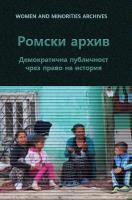
We kindly inform you that, as long as the subject affiliation of our 300.000+ articles is in progress, you might get unsufficient or no results on your third level or second level search. In this case, please broaden your search criteria.


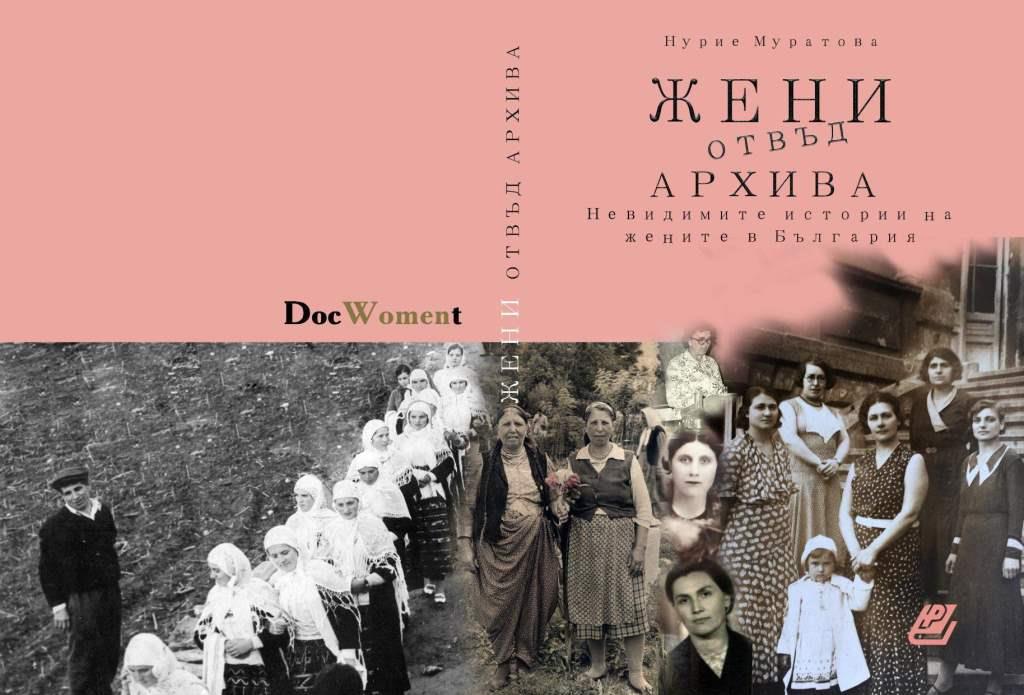
The monograph “Women beyond the Archive. Invisible Histories of Women in Bulgaria” is focused on researching the archives of and for women in Bulgaria. The proposed model encompasses the chronological framework of the period of the communist regime and considers the historical conditions of the founding of the State Historical Archives in 1951. The object of the study are the archives of women vis a vis the traditional historical archives. I try to outline the presence of the history of women and women’s lifes in the documental heritage. The purpose of the research is to define the models of archive availability in Bulgaria, related to the history of women and more specifically to define the historiographic situation in the sphere of researching gender and the history of women. The archive policies which are part of the general policies of the totalitarian period predetermined the documental presence of history of women. Today we possess a huge ammount of documents – mainly official, about the state activists as well as about the distribution and the manegement of the documentation of the period. It is to be noted that women, who did not fit the ideological narrative of the period are neglected by the archives, because of the well known ideological and institutional standing of the establishment of the State Archives in Bulgaria. Women of diverse minority groups, women who belonged to the political opposition, women workers in the factories, field workers and so on are left out of the collections of the State Archives – or they are present only with especially selected showcase faces. In addition, in the post-socialist archives in Bulgaria once again are absent the a number of groups of women like Gypsy women, Pomak women, Turkish women. Generally speaking, women from the low class – or of diverse ethnic or religious background – are marginalized as well as in the global documental heritage. This situation defines the difficulties which face the researcher of the history of women in Bulgaria. A number of topics and research fields are ignored being unclear and documentary not supported. Still, these obstacles could stimulate the use of non-conventional sources and methods, enriching the research methods. The use of oral history and interdisciplinary methods that unite the approaches of different humanitarian and social sciences gains specific importance. Both the academic discussions and the new research fields, developed after the fall of the Iron Curtain found their place in our scholarly discourse. I have to emphasise that I was not led by the often used practice to adjust the ‘big’ theory to my own research. I have chosen the vice versa method – to let the results of my research found their theoretical justification. Part of my academic inquiries inscribed into the modern theories of the postcolonial studies, minority studies, intersectional theories of accumulation of inequalities and marginalization, and modern identity archive theory. Onether purpose of my research is outline some fields in the archival system which could not be studied by conventional methods. The developing research fields of Gender Studies, History of Women and History of Gender Relations in Bulgaria rarely pay attention to marginalized women. In the first chapter I contemplate the theories which could be applied to the research of the ‘hidden’ women. My aim is not to cover all theoretical recourses but rather to spot possible research horizons. In the first chapter I follow the processes of interaction between historiography and archives as practice of documentation in the framework of socio – philosophical and archive theoretical doctrines. I take into account the postcolonial theories, the theories of intersection of inequalities and marginalization in the context of their relation to the present academic situation in Bulgaria. One of the purposes of the monograph is to outline as a research field the life stories of sometimes double or triple marginalized women.They could be approached by different research methods – and especially via interdisciplinary methods. In the second chapter I present the origin, the history and the development of the archives of women and for women, their variety and specificity in their international context. The geographical framework includes women archives in Europe, the Balkans and the USA. The varieties of archive practices are connected with the enriching the definition of the archive – surpassing the notion of the classical historical archives. The so called ‘identity archives’, part of which are the women’s archives are the best example for this case. In the third chapter I describe the situation in the Bulgarian State Archives in relation to documental heritage of women. For this task I use statistical methods for outlining its size on the background of the official polices towards women. For data searching in the entire archival system of the Bulgarian State Archives I used the informational system of the institution. I analysed the content of all the files (Фонд) in order to define only the archives related to the history of women. Another important documental resource are the personal files of women (including family records) which I researched in details. What is important to note about the personal archives is that they reflect directly the policy of the archival system in preserving the memory of women. The last chapter includes several case studies of women’s archive stories which I have studied in details and which I have already published (some of them in joint works with other colleagues, including published books). In this chapter I consider their stories only from the point of view of their archive presence and in relation to the statement of Mary Beard “No documents, no history”. Through the prism of postcolonial theories and the theories of accumulation and intersection of inequalities and marginalization I have researched the archival presence of Muslim women and Gipsy women during the totalitarian period. There have been many research obstacles related to the reconstruction of life stories of three women who were activists of the Bulgarian Agrarian Union. Two of them (Rajna Lapardova and Nevena Elmazova) have two ‘archives’ – one ‘official’ prepared and delivered by them to the State Archive – and another one fabricated by the repressive apparatus of the State Security. which outlines different biographical trajectory. The third woman who belonged to the Oppositional Agrarian Union (Tsvetana Tsacheva) has spent years in the communist labour camps after 1947, when the political opposition in Bulgaria was eliminated. Tsacheva does not have official archive and her life story could be reconstructed only using the method of oral history. Although there were some traces in the State Security Archive marking the persecution against her, her own experience would have been unknown if the method of field research was not used. The other similar cases of persecuted women because of their Turkish ethnic origin were the lecturers at the Sofia University Mefkure Mollova and Hayrie Memova-Suleymanova. The persecutions against them are well documented in the State Security Archive at the expense of the lack of any traces of their academic and other professional activities. The last case (the writer Zlatka Cholakova) is about the so called ‘drawer’ literature, which was sent to the State Archive by misunderstanding. This personal archive research demonstrates the benefits of the so called ‘archive revolution’ which has happened in the last decades – with the opening of the archives of the State Security and the Communist Party. The opening of the archives which are classified as ‘secret archive’ provided opportunities for different kind of research, including the one related to women, who are often excluded from the common research interest.
More...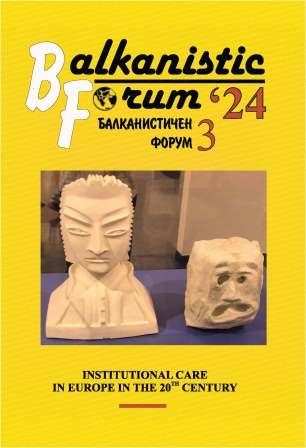

This article deals with aspects of the history of social welfare in the European rural countryside, a topic which has received little attention by historians. It explores child and early youth care, as well as elderly care strategies and practices in Austrian peasant societies during the first decades of the twentieth century, pointing out that official as well as public interest in social welfare prioritized children and early youth over old age, and urban areas over rural ones. The paper argues that in the regions under examination child- and elderly care systems operated “beyond the welfare state” system, as the title goes, while also existing parallel to its early manifestations, and sometimes (as far as laws are concerned) in a relationship with it. Foster care was the primary mechanism for taking care of out-of-wedlock children, who constituted valuable labor force for peasant households. Provision of food and shelter to the elderly (usually former rural servants), by rotating peasant households, remained a fundamental mechanism for taking care of the aged poor well into the twentieth century. In contrast to the welfare provided by the mature twentieth century welfare state, these forms of social welfare were largely associated with social discrimination and feelings of shame, during a period of apparent transition to a new era of social welfare.
More...
This article deals with the possibilities and limits of rooting foster care in interwar Yugoslavia, which was primarily presented through a local project in Savska Banov-ina and reflected in a health film produced by the School of Public Health. The vicissi-tudes of foster care in Yugoslavia are set in the global and Balkan contexts, and in relation to interstate settings for child protection and its initial institutionalization as a strategy for legitimizing the new supra-national institutions of social work and post-1918 nations. The public representation of foster care to the international community and wider audiences in Yugoslavia is explored by examining the reports of Mica Trbo-jević, one of the main proponents of foster care, prepared for the First Balkan Con-gress on Child Protection (1936), and the film Spas male Zorice (1931 by Mladen Širola). Discursive practices aimed at promoting foster care are discussed in compari-son to mainstream visions of families, children and rural communities, disseminated among Yugoslav and international experts.
More...
This article explores the enduring influence of eugenic ideas on British psychiatry and social policy in the aftermath of the Second World War, with a specific focus on the establishment of children reception centres. It provides a detailed case study of the Caldecott Community in Kent, and its involvement in the creation of an experimental reception centre, alongside members of the British Eugenics Society, notably the psy-chiatrists Hilda Lewis and Carlos Blacker. It demonstrates how these psychiatrists attempted to forge a link between childhood behavioural development and adult neu-roses based upon environmental influences, such as adverse home conditions, coupled with assumptions about the hereditary susceptibility of behaviours and abilities linked to the causes of poverty. It explores how eugenic ideas influenced the categorisation of ‘problem families’ during the experiment, the collection of family and social back-ground history on the children sent to the reception centre, and how hereditarian ideas influenced the eventual separation of children from their parents. The article demonstrates how eugenics, via a pathologisation of childhood and family life, was able to integrate into the policy debates on child welfare within early post-war Brit-ain.
More...
In the Bulgarian context of child healthcare and socialist health policy, this study focuses on the Children’s Sanatorium in Momin Prohod, which was dedicated to the rehabilitation of children with long-term disabilities resulting from poliomyelitis epi-demics. Established in the early 1950s, it was the only specialized healthcare facility of its kind in Bulgaria, combining both therapeutic-rehabilitative and educational work. The sanatorium gained international recognition and even treated patients from abroad, including from countries on the other side of the ‘Iron Curtain’. Institutional-ly-focused in nature, this research is situated within the dominant medical model of the time. Chronologically, it spans the 1950s and 1960s, and is based on official doc-uments from state archives.
More...
Caring for children in need is a global issue and cause. Every country seeks effective models to implement and adapt in its social environment. An example of such an effort in Bulgaria is the creation and implementation of Family Children's Homes. This was a social experiment aimed at placing children in need within a family environment. The first of these homes was established in 1987 in Pernik, followed by additional homes in Sofia and Pleven. Inspired by foreign practices, the experiment began with the preparation and placement of children in "Family Children's Homes". Before in-troducing this alternative to institutional care in Bulgaria, the traditions of family orphanages in Czechoslovakia and Poland were studied. The concept of the experi-ment is closely resembling modern social service and protective measures such as fos-ter care. The paper examines the emergence of family orphanages in the twentieth century as an alternative form of institutional care. It focuses on the experiment’s development, set against the background of the general concept and organization of institutional care in Bulgaria. The research is grounded in fieldwork in the city of Pernik and the diary book "Hungry for Love" by Tsvetana Doneva, the director of the "First Family Children's Home" in Bulgaria.
More...
This article analyses the history of residential care for babies and toddlers in the two German states between the 1950s and the 1980s. A comparative perspective is em-ployed to delineate similarities and differences in their developmental trajectories. Initially, parallel trends could be observed: in the first period, infant homes for babies and toddlers exhibited significant growth in East and West Germany, and the scien-tific discourse manifested conformity in both. Substantial disparities emerged only in the 1960s. In capitalist West Germany, these institutions were rapidly dismantled due to alarming findings from scientific research. In contrast, within socialist East Germa-ny, the infant homes for babies and toddlers gradually vanished from public discourse while simultaneously enduring as an institution for residential care until the collapse of the German Wall in 1989.
More...
This article seeks to trace the 'hierarchical' interconnections of corruption across three levels ‒ institution, society, and the state ‒ through an examination of institu-tions for mentally disabled children and the neuropsychiatric hospitals in the People's Republic of Bulgaria. The article focuses on several micro-historical cases between 1940s and 1970s, where we find clear direct and indirect evidence of financial and material abuses, even though inspecting authorities did not make any formal accusa-tions in the courts in any of these cases. Seeing the institutions as part of the so-called "personal network society”, whilst taking into account the objective realities of the era (e.g. personnel shortages, a "shortage economy"), the article theorizes a "paternal-istic form" of corruption, which is essential to all hierarchical levels. The analysis draws on documents from care homes and neuropsychiatric hospitals located in state archives in Sofia and other regions, as well as the archives of the Ministry of People’s Health and Social Welfare.
More...
The article traces the intertwined history of psychiatry and youth welfare in Germany, highlighting concerning continuities that persist to the present day. In the late 19th century, psychiatry and youth social work in Germany developed their professional identities in parallel, with psychiatry emerging in adult "lunatic asylums" and youth welfare arising from the practice of "compulsory education" of children and adoles-cents in reformatories. As psychiatry transitioned into a medical discipline, youth welfare was formalized through legislation derived from Article 55 of the 1871 Ger-man Penal Code. Both fields were practised in large institutions of the "total institu-tion" type analysed by Goffman. The discourse around ‘neglected’ children quickly became associated with eugenic-racist, psychiatric and criminological ideologies. The eugenic-psychiatric paradigm dominated even reformist-pedagogical views in the years following World War I, with the new generation of psychiatrists further classify-ing and pathologizing youth. During this period, social work organisations ‒ Chris-tian charities, liberal-humanist, social-democratic ‒ did not oppose the racial-eugenic discourse, but rather paved the way for Nazi population politics. The 1933 law on forced sterilization, enforced in early 1934, was a result of this ideological continuity. Even after 1945, the careers of many psychiatrists, like Werner Villinger, demonstrate the persistence of eugenic thinking in post-war Germany. In summary, there remains a demand for critical reflection on the histories of psychiatry and youth welfare in Germany.
More...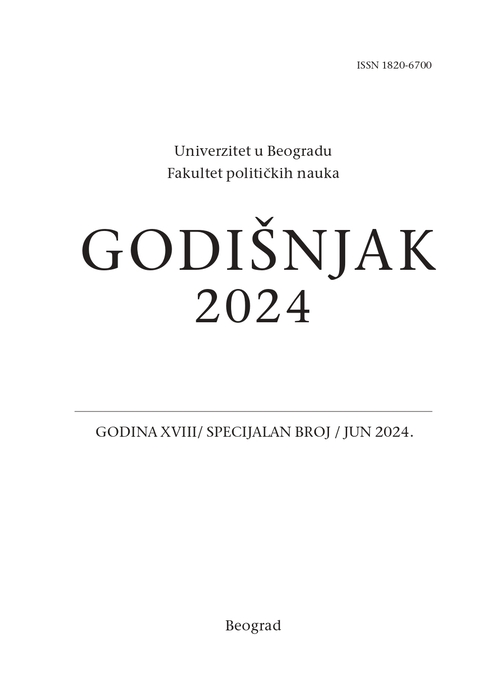
The refugee crisis, which began with the war conflicts between the Russian Federation and Ukraine in February 2022, is one of a series of humanitarian crises that have affected the area of Europe in the last few years, with the consequence of causing social insecurity for many people across Europe. The member states of the European Union had to adapt to the new circumstances in a short period of time. The key research question of the paper is: what the specifics of the current refugee crisis for national social policies are and how did key destination countries respond to the crisis, with a special focus on labor market policy measures and outcomes. The paper analyses the integration programs of refugees from Ukraine, using the institutional approach, content analysis and comparative method. The management of the current crisis, under the auspices of the EU, has been significantly improved compared to the migration crisis management model from 2015. On the other hand, in the observed countries of destination, the biggest challenges were recorded in adapting the active labour market policies to the specifics of the last crisis, which should enable a longer-term social and economic integration of refugees.
More...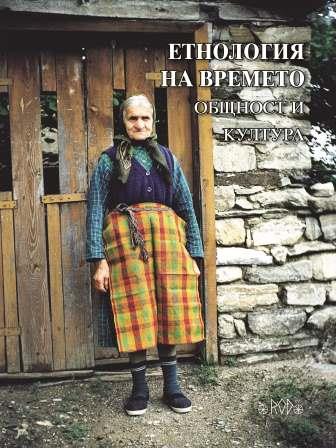
Neophyte Rilski is one of the brightest personalities that Bansko gave to Bulgaria. His work occupies a significant place in the history of Bulgarian education. His educational activity is related to an important stage in the development of the new Bulgarian culture – the movement for a new Bulgarian school, literature, and language. Recognition for the great work of Neophyte Rilski and the enormous services to the Fatherland, the people and the church, for school education and education was given by the entire Bulgarian cultural community in connection with the celebration of his 230th anniversary. The report draws attention to publications about Neophyte Rilski by his contemporaries, biographers, historians, educators, philologists, ethnologists, ethnographers, writers, poets. A number of interesting facts have been preserved in folk memory, published in ethnographic collections and publications of local legends from Bansko.
More...
This article analyzes the perception of time in monastic culture and in the context of an Orthodox parish. It decides that the measure of the perception of time in Orthodox monastic culture is the divine eternity; the measure of parish perception of time is the rhythmicity of earthly human life.
More...
The researcher compares the two works by Simeon of Thessaloniki with their shorter versions, which appeared in the Balkans “Ἑρμηνεία περὶ τοῦ θείου ναοῦ” (“Explanatio de divino templo”) the former on the basis of its 15th-century Southern Slavonic epitome, entitled Протлⷦь луⷮргїи, и црк҃ви, и чи́нꙋ сщ҃енⸯничьскомꙋ (according to the copy in the RGADA 88 manuscript 16th century, and the latter “Περὶ τῆς ἱερᾶς λειτουργίας” (“De sacra liturgia”) on the basis of its partial Church Slavonic translation according to the hagiography of Spiridon of Gabrovo of the early 19th century (No. 1322 at the National Library St. Cyril and Methodius). These texts are compared as regards the interpretation given in them of holy time in the Eucharistic service. The information about every single item in the liturgy in the sources compared is presented with a view to its external (ritual) aspect and its inner meaning (symbolism). As a result, the Southern Slavonic reception of the Greek mystagogic knowledge of the late Middle Ages and the Renaissance is reflected in the overall context of the liturgical exegesis of one of the most distinguished late Byzantine mystagogues, seen in his individual intellectual development.
More...
The article provides an overview of different cognitive models of the concept of TIME as a part of our linguistic picture of the world. In our consciousness these models coexist and complement each other, and in everyday life in different situations we switch from one model to another.
More...
On the Balkan Peninsula, the crisis moments that were current in antiquity, forced people to organize adequate protection against the risks and dangers of that time. So, they themselves and also their material goods had a certain degree of security. All this was also characteristic of the territories that today include the municipalities of Shtip and Karbinci. Here, the population used various methods and ways in order to provide an adequate response to the security challenges they faced during this historical period.
More...
After almost 77 years of peace, the beginning of the 2022 was marked by the beginning of q new war on the European continent. It began with the use of the standard conventional military arsenal, after which some of the most advanced weapons of this type, technological achievements of the modern military industry, came to use. As a result of the military actions, the development of the word economy was seriously affected, but according to our observations, they also have an impact on the atmospheric circulation and specific climatic conditions. The direction of our research is based on the so-called “reasonable doubt” related to both the possibilities of using electromagnetic weapons (HAARP) and the direct effects of military actions (ecocide) with the release of a significant volume of dust particles into the atmosphere and combustion of huge quantities of gas from Russia.
More...
Changes in the climate, especially in temperatures, are increasingly noticeable, both on the territory of Bulgaria and in the Balkans. They are registered not only in the lowland-plain parts, but also in the mountainous and coastal areas. The focus of the study is the cases of manifestation of a compensatory mechanism in the temperature regime. It is observed in years with a distinct distinct colder or hotter-than-average-static season. The research period covers the last 30 years.
More...